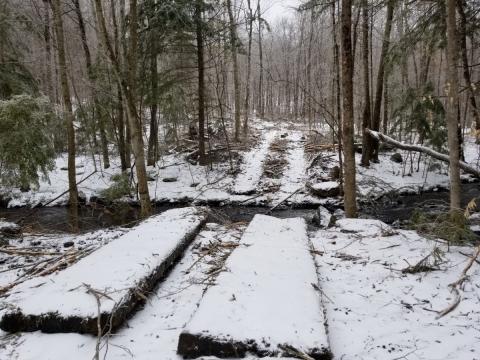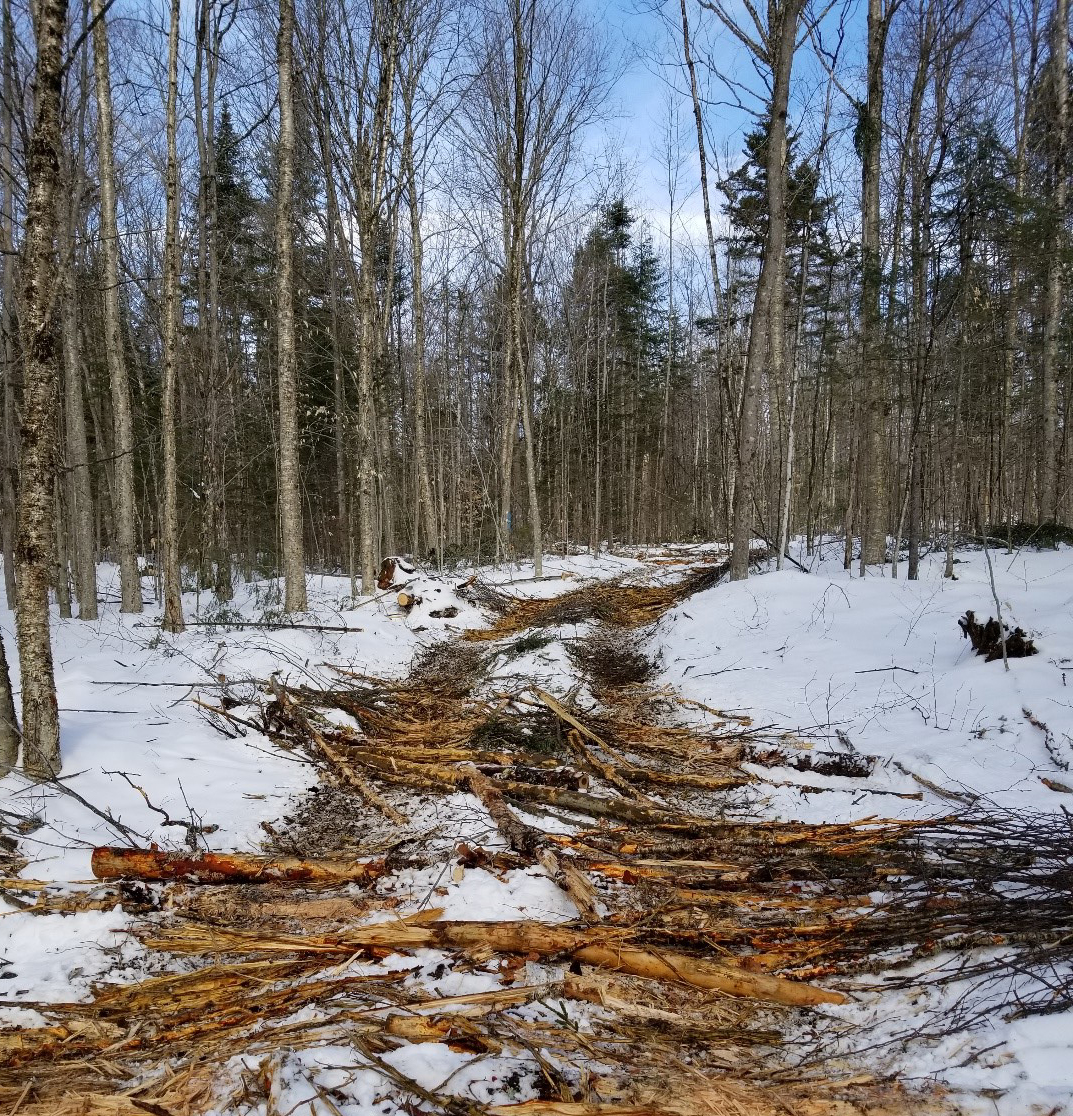Emergency Erosion Control on Private Forest Land

Adapted from the US Forest Service "A Watershed Forestry Success Story".
The Challenge:
Weather emergencies are occurring more frequently as bigger and more intense storms become more common. Land managers—landowners, foresters, and others—cannot anticipate or prepare for every contingency, but they can rely on a set of best management practices (BMPs) to prevent soil erosion during extreme weather events. Increasing their knowledge of effective techniques and newer erosion control materials would prepare land managers to mitigate problems and reduce their overall costs.

The Solution:
With funding from the USDA Forest Service and the NH Division of Forests and Lands, University of New Hampshire Cooperative Extension demonstrated storm management options for land managers. The project taught land managers about advanced soil erosion control techniques and materials to protect roads, stream crossings, and log landings during extreme weather events.
Land managers can use on-site materials, such as heavy-duty ropes, chains, and brush, to divert or slow the movement of water and can easily incorporate these items into any logging crew’s inventory. Road salt can be used to melt ice in soil, allowing installation of water bars. Compost filter socks or straw wattles can be used to divert water off skid trails. With advanced planning, land managers can keep these materials available to mitigate erosion during extreme weather events. Other simple planning activities include stockpiling brush instead of chipping it or keeping timber mats on hand for soft spots that develop on skid trails during thaws or downpours. Asking a few simple questions during a timber sale layout will help land managers anticipate potential problems and plan to prevent them.
.jpg)
(Courtesy photo by Karl Honkonen)
Resulting Benefits:
Extension met in 2015 with the New Hampshire Timber Harvesting Council, which represents diverse land management perspectives and skills, to provide an overview of the project and get input on its content, locations, and potential participants for proposed workshops. Participating organizations conducted five workshops from 2015 to 2018 with 128 land managers from across the State to share BMPs for extreme weather events. The project addressed the purpose statement of the Forest Service Landscape Scale Restoration Program: to shape and influence forest land use on a scale that optimizes public benefits from trees and forests for both current and future generations.
Sharing Success:
Extension developed a publication listing measures to prevent soil erosion that results from severe weather events. Lessons learned from the project, along with the publication, will be shared at future Certified Professional Logger Program offerings, presented by the New Hampshire Timber Harvesting Council, as well as at Extension courses.
This grant project helps New Hampshire land managers prepare for and respond to weather emergencies.
